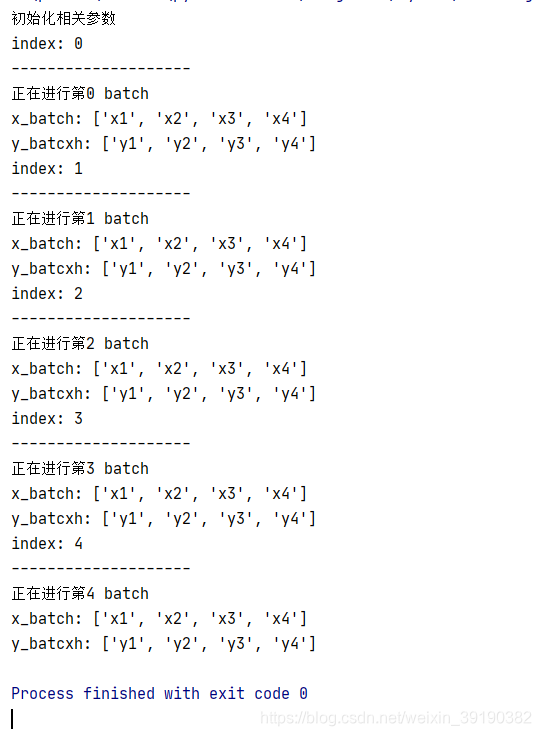every blog every motto: You can do more than you think.
0. 前言
在训练模型时,我们往往不一次将数据全部加载进内存中,而是将数据分批次加载到内存中。
- 一种方法是用 while True 遍历数据,用yeid产生,具体可参考语义分割代码讲解部分
- 另一种方法是本文即将讲解的tf.keras.utils.Sequence方法
1. 正文
__ len __ 中返回的即1个epoch迭代的次数,即:
总样本数/ batch_size
__ getitem __ 根据len中的迭代次数,生成数据
注意: __ len __ ,__ getitem __ 必须要实现
"""
测试
__getitem__
"""
import os
os.environ['TF_CPP_MIN_LOG_LEVEL'] = '2'
import tensorflow as tf
class Date(tf.keras.utils.Sequence):
def __init__(self):
print('初始化相关参数')
def __len__(self):
"""
此方法要实现,否则会报错
正常程序中返回1个epoch迭代的次数
:return:
"""
return 5
def __getitem__(self, index):
"""生成一个batch的数据"""
print('index:', index)
x_batch = ['x1', 'x2', 'x3', 'x4']
y_batch = ['y1', 'y2', 'y3', 'y4']
print('-'*20)
return x_batch, y_batch
# 实例化数据
date = Date()
for batch_number, (x, y) in enumerate(date):
print('正在进行第{} batch'.format(batch_number))
print('x_batch:', x)
print('y_batcxh:', y)
结果:

参考文献
[1] https://blog.csdn.net/weixin_39190382/article/details/105808830
[2] https://blog.csdn.net/weixin_43198141/article/details/89926262
[3] https://blog.csdn.net/u011311291/article/details/80991330